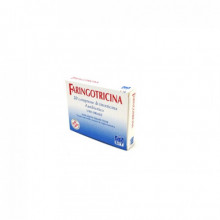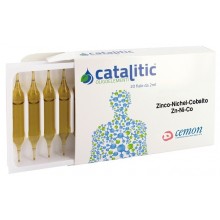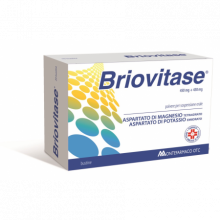FASTUADVANCE * SPRAY 25G 4%
Therapeutic indications
For the local symptomatic treatment of mild to moderate pain and inflammation following acute blunt trauma to small and medium sized joints and periarticular structures.
Dosage and method of use
Dosage AdultsSpray a sufficient amount of Fastuadvance on the affected skin area. Depending on the size of the area to be treated, apply 4-5 sprays (0.8-1.0 g of spray containing 32-40 mg of diclofenac sodium) 3 times a day at regular intervals. A maximum single dose of 1.0 g of product should not be exceeded. The maximum daily dose is 15 sprays (3.0 g of spray containing 120 mg of diclofenac sodium). Gently massage the skin to facilitate the absorption of Fastuadvance. Wash your hands after application, unless they are the treatment site. After application, let it dry for a few minutes before covering or bandaging the treated area. Treatment can be stopped once the symptoms (pain and swelling) have subsided. Treatment should not be continued for more than 7 days without medical supervision. The patient should consult the doctor if there is no improvement after 3 days or if symptoms worsen.Special populations Elderly peopleNo special dose adjustment is necessary. Given the profile of possible side effects, elderly subjects must be subjected to particularly careful monitoring.Patients with renal insufficiencyNo dose reduction is required in patients with renal insufficiency.Patients with hepatic insufficiencyNo dose reduction is required in patients with hepatic insufficiency.Pediatric populationThere are insufficient data on efficacy and safety in children and adolescents aged less than 14 years (see also section 4.3 Contraindications). In children 14 years of age and older, if this product is to be used for more than 7 days to relieve pain or if symptoms worsen, the adolescent's patient / parents should / should consult a physician.Method of administrationFor cutaneous use only.
Contraindications
- Hypersensitivity to diclofenac, peanuts, soy or to any of the excipients listed in section 6.1; - Hypersensitivity to acetylsalicylic acid or other non-steroidal anti-inflammatory drugs (NSAIDs); - Patients who have experienced asthma attacks, urticaria or acute rhinitis after taking aspirin or other non-steroidal anti-inflammatory drugs (NSAIDs); - Use on open lesions, inflammations or infections of the skin as well as eczema or mucous membranes; - During the third trimester of pregnancy; - Children and adolescents under the age of 14.
Side effects
Skin disorders have been frequently reported. Adverse reactions (Table 1) are ranked by frequency, starting with the most frequent, according to the following convention: very common (≥ 1/10); common (≥ 1/100 in Table 1
| Disorders of the immune system |
| Very rare | Hypersensitivity (including urticaria), angioneurotic edema |
| Infections and infestations |
| Very rare | Rash with pustules |
| Respiratory, thoracic and mediastinal disorders |
| Very rare | Asthma |
| Skin and subcutaneous tissue disorders |
| Common | Rash, eczema, erythema, dermatitis (including contact dermatitis), pruritus* |
| Rare | Bullous dermatitis |
| Very rare | Photosensitivity reaction |
| Not known | Application site reaction, dry skin, burning sensation |
* Pruritus was recorded with a frequency of 0.9% in a clinical study, in which 236 patients with ankle sprains were treated with 4-5 puffs of Fastuadvance three times a day (120 subjects) or placebo ( 116 subjects) for 14 days. When Fastuadvance is applied to large skin areas and over a long period of time, the appearance of systemic side effects cannot be excluded. Reactions such as abdominal pain, dyspepsia, gastric, liver or kidney disturbances, and systemic hypersensitivity reactions may arise.Reporting of suspected adverse reactionsReporting of suspected adverse reactions that occur after authorization of the medicine is important, as it allows continuous monitoring of the benefit / risk ratio of the medicine. Healthcare professionals are asked to report any suspected adverse reactions via the national reporting system at http://www.aifa.gov.it/content/segnalazioni-reazioni-avverse.
Special warnings
The possibility of systemic adverse events with the application of Fastuadvance cannot be excluded if the preparation is used on large skin areas and for a prolonged period (see the Summary of Product Characteristics of systemic forms of diclofenac). Fastuadvance should only be applied to intact, non-diseased skin, and not to skin wounds or open lesions. It should not be allowed to come into contact with the eyes or mucous membranes and should not be ingested. Fastuadvance can be used with non-occlusive dressings, but should not be used with an occlusive dressing that does not allow air to pass. Patients should be advised to avoid exposure to sunlight or radiation from tanning lamps in order to reduce the incidence of photosensitivity. Discontinue treatment if skin rash develops after application of the product. Caution should be exercised when using Fastuadvance concomitantly with oral NSAIDs, as it may increase the incidence of systemic side effects (see section 4.5). Undesirable effects can be reduced by using the lowest effective dose for the shortest possible time. Bronchospasm can be aggravated in patients who suffer or have suffered in the past from bronchial asthma or allergic disease. Fastuadvance should be used with caution in patients who have a history of peptic ulcer, hepatic or renal insufficiency, haemorrhagic diathesis or inflammatory bowel disease, as isolated cases have been recorded following topical use of diclofenac. Fastuadvance contains propylene glycol which can cause skin irritation in some people. Fastuadvance contains peppermint essential oil which can cause allergic reactions.
Pregnancy and breastfeeding
PregnancyThe systemic concentration of Fastuadvance, compared with oral formulations, is lower after topical administration. Referring to experience with NSAID treatment for systemic administration, the following is recommended: Inhibition of prostaglandin synthesis may adversely affect pregnancy and / or embryo / fetal development. Results of epidemiological studies suggest an increased risk of miscarriage and cardiac malformation and gastroschisis after use of a prostaglandin synthesis inhibitor in early pregnancy. The absolute risk of cardiac malformations increased from less than 1% to approximately 1.5%. The risk is believed to increase with dose and duration of therapy. In animals, administration of prostaglandin synthesis inhibitors has been shown to cause increased pre- and post-implantation loss and embryo-fetal mortality. Furthermore, an increased incidence of various malformations, including cardiovascular, has been reported in animals treated with prostaglandin synthesis inhibitors during organogenesis. During the first and second trimester of pregnancy, Fastuadvance should not be administered unless strictly necessary. If Fastuadvance is used by a woman planning to become pregnant, or during the first and second trimester of pregnancy, the dose should be kept as low as possible and the duration of treatment as short as possible.During the third trimester of pregnancy, all inhibitors of prostaglandin synthesis can expose the fetus to: - cardiopulmonary toxicity (with premature closure of the arterial duct and pulmonary hypertension); - renal dysfunction, which can progress to renal failure with oligohydroamnios; the mother and the newborn, at the end of pregnancy, to: - possible prolongation of the bleeding time, an antiplatelet effect which can occur even at very low doses; - inhibition of uterine contractions with consequent delay or prolongation of labor. Therefore, diclofenac is contraindicated during the third trimester of pregnancy.Feeding timeLike other NSAIDs, diclofenac passes into breast milk in small amounts. However, at therapeutic doses of Fastuadvance, no effects on the infant are anticipated. Due to the lack of controlled studies in breastfeeding women, the product should only be used during breastfeeding on the advice of a healthcare professional. In this circumstance, Fastuadvance should not be applied to the breasts of nursing mothers, or elsewhere on large skin surfaces or for an extended period of time (see section 4.4).
Expiration and retention
Store in the original packaging.
Interactions with other drugs
Since the systemic absorption of diclofenac following a topical application of Fastuadvance is very low, interactions with other medicinal products are very unlikely. Concomitant use of acetylsalicylic acid or other NSAIDs may increase the incidence of adverse reactions (see section 4.4).
Overdose
The low systemic absorption of topical diclofenac makes an overdose very unlikely. However, undesirable effects similar to those seen following an overdose of diclofenac tablets may be expected if Fastuadvance is inadvertently ingested (e.g. a 15 ml spray bottle containing 500 mg diclofenac sodium). In the event of accidental ingestion, resulting in significant systemic side effects, general therapeutic measures normally taken to treat poisoning with non-steroidal anti-inflammatory drugs should be undertaken. Gastric decontamination and the use of activated charcoal must be considered, especially within a short time of ingestion.
Active principles
Each gram of solution contains 40 mg of diclofenac sodium. Excipients with known effects: 150 mg of propylene glycol (E1520) / gram of solution, 100 mg of soy lecithin / gram of solution. For the full list of excipients, see section 6.1.
Excipients
Isopropyl alcohol, soy lecithin, ethanol, disodium phosphate dodecahydrate, sodium phosphate dihydrate, disodium edetate, propylene glycol (E1520), essential oil of mint, ascorbyl palmitate, hydrochloric acid 10% (w / w) for pH adjustment, sodium hydroxide 10% (w / w) for pH adjustment, purified water.

 Convenient and safe payments
Convenient and safe payments
 Shipping in 24h all over the world
Shipping in 24h all over the world
 Fast returns
Fast returns
 Pharmaceutical experience
Pharmaceutical experience










